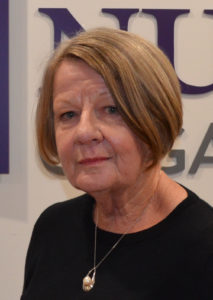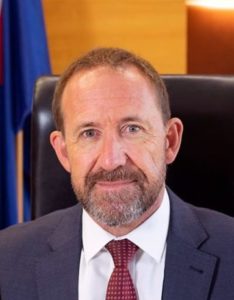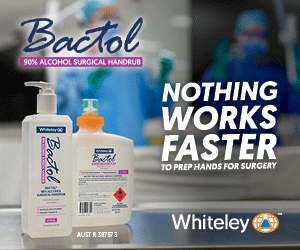
Having spent eight years at NZNO advocating alongside my colleagues for the implementation of safe staffing programme Care Capacity Demand Management (CCDM), I wondered if at last this would be the turning point. Would this be an opportunity to move forward with CCDM and make a difference for nurses and nursing?
Years of negotiating for safe staffing by NZNO, changes in relevant clauses in the DHB multi-employer-collective-agreement (MECA) – even the signing of a safe staffing accord – had not achieved the right number of nurses with the right skills in the right place at the right time – the crucial elements of safe staffing.
‘Understaffing is the new normal’ – DHB RN

The Minister of Health Andrew Little commissioned the review to:
- Review implementation of CCDM including programme components and success factors.
- Compare outcomes in DHBs where CCDM is fully implemented with those at the early stages of CCDM implementation.
- Examine the impact of CCDM on safe staffing, patient care and work environments in DHBs where it is fully implemented and
- Make recommendations for the next steps of this national programme.
I was fortunate to be joined by three other nurse colleagues familiar with the CCDM programme:
Dr Jill Clendon – formally NZNO policy advisor now associate director of nursing and operations manager for ambulatory care at Nelson/Marlborough DHB.
Kapua Quinn – nurse manager of the integrated operations centre at Capital and Coast DHB.
Dr Rhonda McKelvie – previously a programme consultant with the Safe Staffing Health Workplaces Unit and now a senior lecturer at the Massey University School of Nursing.
Together we formed the Nursing Advisory group with the apt acronym of NAG.
The task was substantial and the timeframe short – we had three months to prepare a report for the Minister. Thankfully we were well supported by the Hauora team at KPMG consultants as our secretariat and staff at the Ministry of Health (MoH) provided project management support.
Approach and Methodology
The journey began with a session with KPMG and the MoH to discuss who we needed to talk with, how we would do that and what data did we need to request from the DHBs. The NAG was in agreement from the outset that this review was about safe patient care and hearing the voices of nurses – their work environments, their experience of the CCDM programme and whether or not it was working for them.
Hearing how nurses coped, their resilience, commitment and professionalism was awe-inspiring.
The focus for this review was on medical, surgical, mental health and asessment, treatment & rehabilitation wards across the 20 DHBs. Emergency Departments were added to the scope of the review at the request of the NZNO College of Emergency Nurses. DHB Midwifery and community nursing services were out of scope of the review however it is acknowledged in the report that these areas need to be included in a system-wide approach to safe staffing
Sources of information
- We connected with nurses (all scopes including registered and enrolled nurses, charge nurses, nurse managers and Directors of Nursing) in focus groups, interviews and through an online survey.
- We requested Core Data Set data (care hours variance and shifts below target) and TrendCare data from all DHBs
- We reviewed international literature on other approaches to Safe Staffing. The review examined ratios as an approach closely and determined that CCDM remains the most effective tool for the New Zealand context if implemented effectively.
What we found
CCDM does not recognise Te Tiriti O Waitangi responsibilities in its design, implementation or outcomes.
CCDM has given visibility to the work of nurses and the historic under-investment in growing the nursing workforce which has led to nursing shortages across Aotearoa. This has been exacerbated by the COVID-19 pandemic but that is not the root cause of the prevailing staffing issues.
Nurses are working longer hours and extra shifts to cover staffing shortages. The impact of this on nurses and their whānau is severe.
There is agreement amongst the workforce that CCDM is the right tool to determine safe staffing however there are some fundamental issues with its current configuration which create unnecessary complexity.
In its current form CCDM has limited impact on patient outcomes.
The delay in implementing the results of FTE calculations has caused widespread distrust in the programme and contributed to the staffing deficit.
What did we recommend?
There are eight recommendations: (a summary of these is on page 13 of the report and are provided in more detail on pages 68-77)
- Review the design, operation, implementation and governance of CCDM and TrendCare to recognise and uphold the articles of Te Tiriti
- Redesign key components of the CCDM programme to ensure it is fit-for-purpose
- Strengthen leadership and accountability for the CCDM programme
- Invest in the infrastructure which enables and underpins CCDM
- Increase nursing supply immediately and in the long-term
- Review the role of the Safe Staffing and Healthy Workplaces Unit
- Establish a national work programme to oversee the delivery of the changes to CCDM
- Complete development work on the ED module
The NAG has suggested that work on these recommendations begins immediately with those that have a significant impact on safe staffing, patient outcomes and the work environment be prioritised for implementation in the next twelve months.
Participating in this review has been both humbling and distressing. Hearing first hand from nurses about the difficulties they face on a daily basis, the concern they have for their patients and the exhaustion they are feeling was distressing. Hearing how they coped, their resilience, commitment and professionalism was awe-inspiring.
Kia kaha, kia māia kia manawanui
- Hilary Graham-Smith was NZNO’s associate professional services manager 2012-2020.




